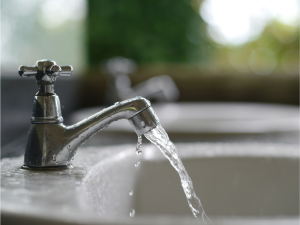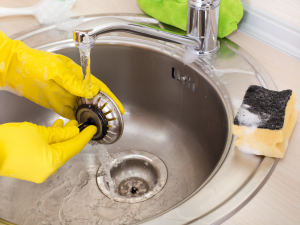Clogged main sewer lines can be a major headache for homeowners. The clogging of the main sewer line creates tricky plumbing issues that may be beyond the grasp of a homeowner. This is because it can be impossible or outright difficult for wastewater to be drained by a homeowner’s plumbing system.
What is supposed to be a routine function of flushing wastewater away in a clean and efficient manner can become a big mess that may necessitate the input of a plumbing expert to rectify. If not, wastewater that homeowners try to drain from their homes will instead stay in the drainage pipes and flow back through the drains.
If you are a homeowner and you are experiencing this unfortunate issue, below are steps on how to fix a main sewer line clog.
1. Turn off the Water
The initial step in fixing a main sewer line clog is turning off any flowing water in your home. Turning off any flowing water is crucial because it saves the situation from escalating. It would not be sensible to keep water flowing in a clogged sink as this will potentially cause flooding of bathrooms with wastewater.
Furthermore, turning off water will ensure that any leaking pipes will not drain more water into the clogged sewer line.
Locate the water main and turn its wheel, lever, or handle until it is closed off. This is usually considered a precautionary measure, although it’s quite necessary. It helps to ensure that a bad situation doesn’t turn worse.
2. Loosen the Cleanout Pipe and Allow the Main Sewer Line Clog to Drain
The next step on how to clear a main sewer line clog is to locate the cleanout pipe of the home’s plumbing system.
The cleanout pipe is a small pipe fitting 3 inches wide or 4 inches in diameter, which sticks out of the ground and has a screw-on cap. After locating the cleanout pipe, you are supposed to loosen the screw-on cap using a pipe wrench.
Once the screw-on cap has been loosened, allow it to stay on the cleanout pipe for a few seconds before removing it entirely. This should be done slowly to avoid any sudden water or sewage spillage that can occur.
After the screw-on cap has been removed, it is advisable to step away immediately and allow the built-up waste to drain. Allow all the excess wastewater to drain completely before attempting any additional steps.
Please note that before locating the cleanout pipe, it is important to put on gloves and waterproof boots. These serve as protection during the entire process.
3. Insert the Plumbing Snake into a Main Sewer Line Pipe
After the pipe is completely drained, feed an auger or plumbing snake into the cleanout pipe opening. This should be done gently. It is important to scrupulously read and follow the snake’s instructions since each plumbing snake tool is different.
After ascertaining the tool’s instructions, feed the plumbing snake slowly into the cleanout pipe until you reach the main sewer line clog. You’ll know you have reached the clog when the plumbing snake stops moving any further.
Also, there might be several main sewer line clogs. You should slowly work downwards to remove all the clogs in the sewer line.
4. Run the Plumbing Snake until all the Main Sewer Line Clogs are Gone
It is important to ensure that all the clogs are removed before ceasing the operation. This is through running the plumbing snake until no more resistance is felt. Water buildup in the cleanout pipe should also be gone. This is an indication that the blockage in the main sewer line has been removed and the pipe is clear.
However, you should continue to run the plumbing snake even after ascertaining the blockage has been cleared. This is necessary to remove any clumps of clog that may have remained even after breaking up and clearing the drain clog in the main sewer line. Cleaning up the plumbing snake tool is the next activity after ensuring all the clog has been cleared. What you should do is to leave the tool in the drain and hose it down with clean water.
The importance of this is to break up any smaller clogs or leftover debris. Also, hosing down the plumbing snake will remove any wastewater that clings to the tool. The plumbing snake should be consequently removed from the cleanout pipe and placed back onto its fitting. Afterward, remember to test your toilets and main sewer line drains to see if they are working effectively.
5. Engage the Services of a Professional Plumber
While some homeowners might be well versed in this area, it’s always advisable to seek professional plumbing services.
Even though it is possible to fix main sewer line clogs, it is not advisable, especially if the clog is complicated. Professional plumbers have the requisite knowledge, skills, and experience to diagnose the causes of the main sewer line clogs and fix them. Some of the main causes of sewer line clogging include tree roots infiltration, broken pipes, grease, flushed down debris, etc.
In addition, a professional plumber has the necessary tools and equipment to clear a main sewer line clog.
Engaging the services of a professional plumber will help you uncover any issues with your plumbing system and ensure the critical problem is solved. Therefore, do-it-yourself steps combined with the services of a professional plumber are important in clearing a main sewer line clog.








